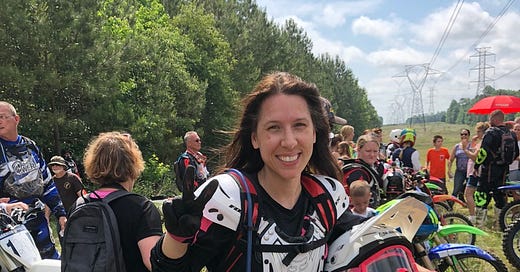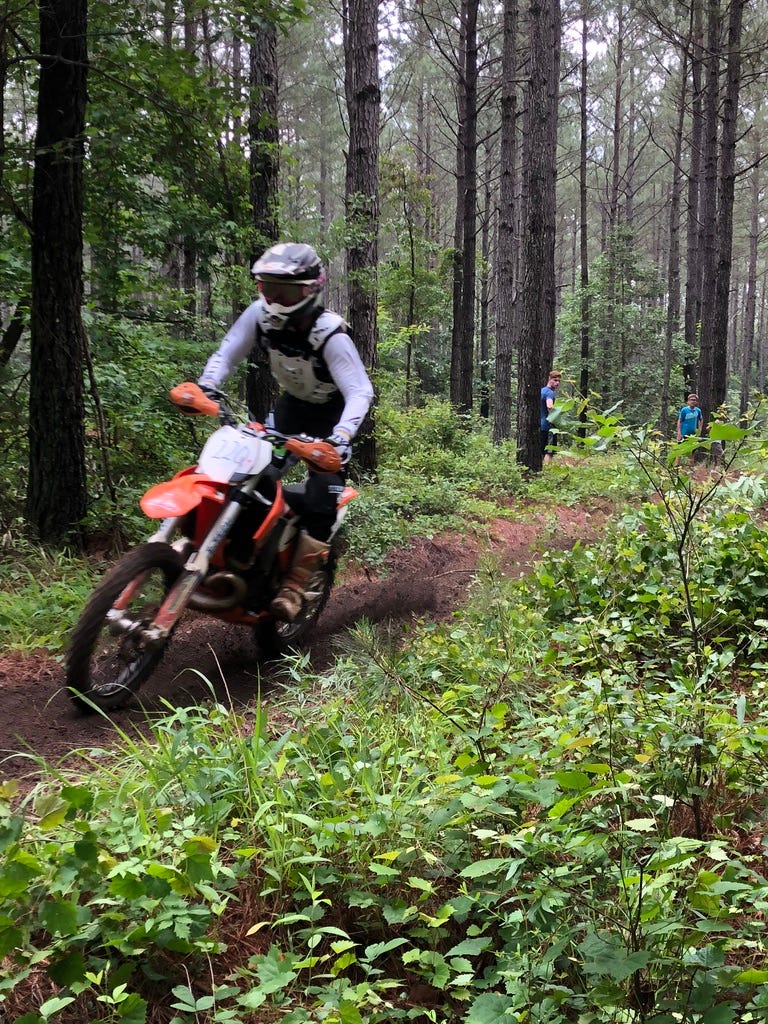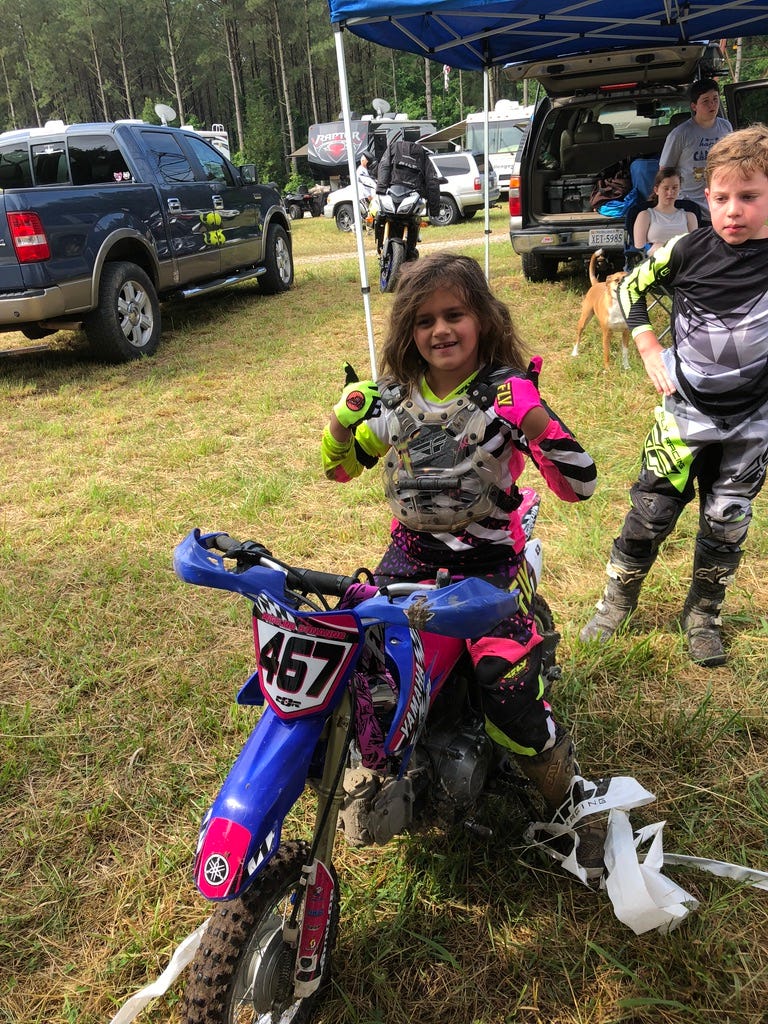I was in the town of Surry, Virginia one day to watch my friend Barron compete in a “hare scramble.” These are motorcycle races through the woods on dirt bikes. Today’s course was about six miles long, tight and winding, and the adult riders would make five laps through it. The clothing, gear, and paint schemes are so uniformly garish and busy with brand names that it is difficult to make out where the boundary of rider and machine lies. Picture a hybrid human shape, like a centaur, standing on the pegs of a trail bike as it comes power-sliding around a crook in the trail, launching off a bump and straight toward an oak tree, yet somehow banking in midair. The expert riders seem to steer with their asses, planting the (often airborne) rear tire into the dirt to the left, to the right, and back. It is a rhythm of brief rooster tails and body English that merge into a high-speed, floating motion through the trees. The accompanying sound is the raspy, tinny high-revving of a two-stroke intermittently engaged, its instantaneous throttle response helping to steer the bike. The very best riders look like animals as they do this, as though this mode of movement had evolved over eons: strange and beautiful predators who bring the speed of the open savannah to the dark and intimate confines of the forest.
Because the course is so tight, there are very few opportunities to pass. So the start is crucial. The riders leave in successive waves a couple of minutes apart, from a line five to fifteen abreast depending on the number of entrants in a given class, starting in an open pasture. Each vies for the “hole shot” that will get them into the lead before the first turn. It’s a chaotic free-for-all, with wheelies off the starting line, contact between bikes and riders sometimes going down in the first hundred yards. There is no impartial judge to declare a foul or false start, just a bunch of grown-ups doing it for themselves.
Except some of them are far from grown up. The Pee Wee classes (ages 4–6 and 7–8) start in the same way. Even more than the physical rigors of the sport, this absence of an authority figure to complain to makes an impression, if one is inclined to wonder what makes a kid tough.
The first races of the morning were of these children’s classes; they were already in progress when I arrived. I noticed the occasional ponytail sticking out from under a helmet. The first race came to an end and the riders started pulling off their helmets, and sure enough, about a quarter of them were girls. They do not have a separate class; they just line up with the boys and go for it. Some of them go on to become “wicked fast,” Barron told me, and race as Expert Women.
There is no supervisory entity making sure there is gender equity in the sport, nor does there appear to be a culture of special solicitude for women. They just show up and race. I talked to some of the Expert Women at the race. Most of them grew up in a family of riders, and getting on a motorcycle was as natural as getting on a bicycle.
There is something interesting going on here. If you are alert to it, you may be struck by a certain unforced ease of gender relations among elements of our society that do things like ride dirt bikes. Going back and forth between such precincts and the tidier scenes of upper-middle-class culture, one becomes aware of a contrast; a different flavor to relations between men and women. Can we dig into this a little?
Keep reading with a 7-day free trial
Subscribe to Archedelia to keep reading this post and get 7 days of free access to the full post archives.






